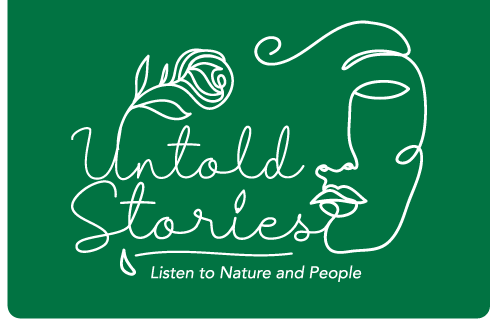Awaking Friends
By:Emilia Recalde
“Animal-blindness—the impossibility to see animals beyond the reflections of ourselves. Plant-blindness essentially is our cultural inability to conceive plants beyond the prefixed cultural schemata”(Aloi, 2018).
The world in which we live is surrounded by magic and through this activity we can visualize all this charm that natures cares and make our home a wonderful multi species place. Stay and see the follow video where you will see, listen and maybe imagine the different smells off all the beasts discovered in this project. Also through this project, I will present our New Feral Friend the: Orange City Wild Cat and why he is Feral and why it is important to tal his story.
The first part of the video focuses on animals. You can see the difference between invasive beasts and introduced ones. You can also analyze the different ways in which they inhabit space as moths always seek light, spiders for darkness and ants for hidden spaces. At the same time it is shown as in the group where I live despite having a lot of traffic of cars and humans the toads continue to inhabit like the birds, if you raise the volume a little you will be able to hear them. We can make visible how beasts need other beasts to live through the spider web full of insects. There are other beasts that we need even if we do not think about it and sometimes they even seem annoying to us like flies in the following link you can find their importance for the environment
https://www.gaceta.unam.mx/las-moscas-mantienen-el-equilibrio-ecologico-de-la-tierra/
There are very numerous beasts such as mosquitoes and others not as numerous as ladybugs. There are some noisy ones like cats and dogs and others like butterflies, worms or ants. But above all there is a beast that steals everyone’s heart and helped us throughout the observation Omalley.
In the second part of the video you can analyze the different encounters with nature that helped us in the process of being a beast ourselves. You can see how plants define territories, some nourish us with their fruits or others invade but we use them to make wishes like dandelions.
Something very interesting that I observed was that the plants live and die in the same place. Others have particular ways of staying despite conditions like the log on a concrete wall that certainly doesn’t belong there. Some only exist like clovers and others we take care of and protect. And something very magical as seen in the last photo is that sometimes the home of the plant is the home for more type of life.
At last but not least the video present our new feral friend the: Orange City Wild Cat and explain what its feral and also let us now that these beast is feral because
- Is living more or less as a wild animal and no domesticated
- I feel that he didn’t socialize with human since a young age and that’s why it is not difficult for him to be feral
- Unsocialized: he is not acclimatized to human touch, sounds. He is fearful and can’t live indoors or can’t be adopted
- Hide and escape from people, show no interest in affection, protect himself running or tightly wrap his tail around him
The video also shows interesting that about our friend like:
- “Community cat” is an umbrella term that refers to the cats unowned and lives outdoors.
- “Independent cat”: He is adapted at finding his own meals, from the leftovers of people to food sources in their natural environment.
- “Touch Barrier”: won’t let a person touch him.
- Hide during the daytime and he won’t meow or respond to human voice
- Feral cats get pregnant more often
The video also discuss what actions does the story of the city Wild Cat bring in two perspectives: Cons and Pros. Finally the project has analyze why does coming face-to-face with the significant being of other ways of life may change the way we relate to the environment? Presenting:
- He has taken courageous steps to make himself a home around humans even he is afraid.
- By understanding his level of socialization, we can successfully advocate for practices and programs that help cats live in the environments best suited to them.
- Observing his behavior, including his body language, can help us see their level of socialization so we can determinate the best way to help, protect and respect him.
Awaking Friends video also explain a form how human can help feral cats by Trap-Neuter-Return that is humane and effective approach feral cats.Improves their lives, relationships with the people who live near them, and decreases the size of colonies over time.
Finally I want to conclude saying that its important to tell these stories because as we lear in classy from the author price “Nature stories should change into encounters with nature”. (Price, 2006). Also the author explain us that we are use to “Imagine nature in opposition to cities instead of finding wildness inside” (Price, 2006) through these project we have shown that every space of our live its full of nature and its time to open our eyes. In the other hand we have to start looking for “Alternative ways of interacting possibilities for more equitable multi species city” (Van Dooren, T.; & Rose, D. B, 2012). And as the text say its necessary to make these interactions with “Our ethics, our love, our compassion, our sorrow, and our future sustain multi-species connections”. (Van Dooren, T.; & Rose, D. B, 2012). Remember “An under- standing of connectivity promotes long-term purposefulness in life and long-term commitments”(Bird Rose, 2013).
I hope you have enjoyed this tour and are interested in you also awakening new friends. Here is the link of the video and some Wonderfull articles about our new feral friend. Thanks for your time and attention
Link Video:
Link for amazing articles:
https://www.alleycat.org/resources/feral-and-stray-cats-an-important-difference/
https://www.alleycat.org/resources/why-trap-neuter-return-feral-cats-the-case-for-tnr/
References:
Aloi, G. (2018). Why Look at Plants?: The Botanical Emergence in Contemporary Art. Brill.
AlleyCatAllies.(2015). “WHY TRAP-NEUTER-RETURN FERAL CATS? THE CASE FOR TNR”.
Bird Rose, D. (2013) Wild Dog Dreaming: Love and Extinction. University of Virginia Press.
Van Dooren, T., & Rose, D. B. (2012). Storied-places in a multispecies city. Humanimalia, 3(2), 1-27.
Price, J. (2006). Thirteen ways of seeing nature in LA. The Believer, 4(3).



